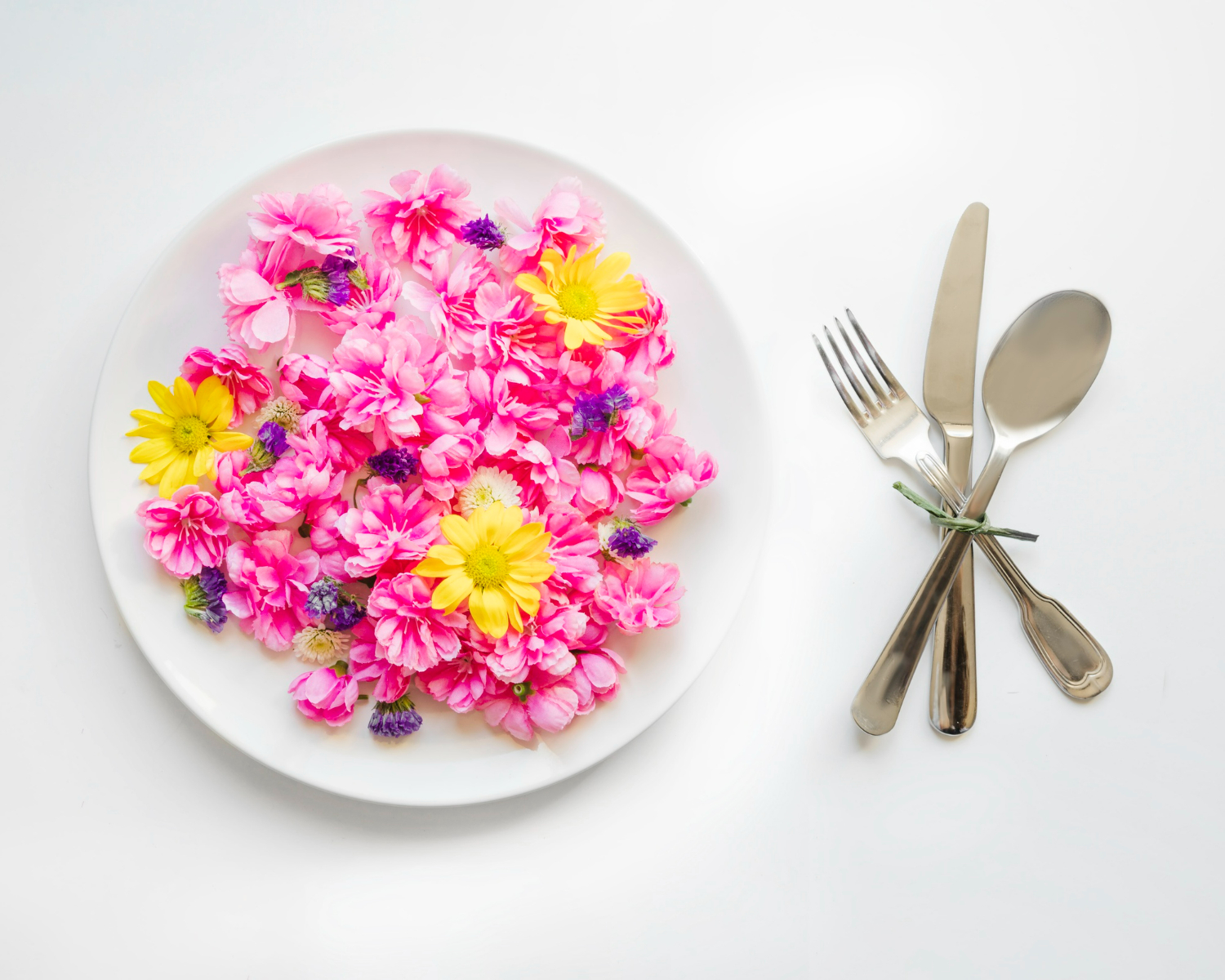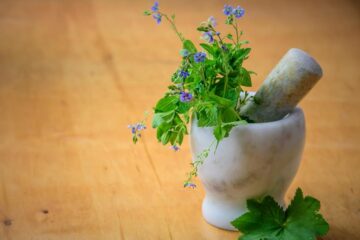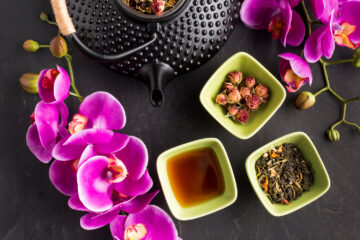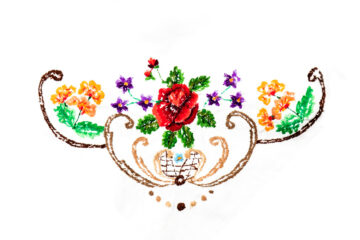You’re about to discover a vibrant world where flowers elevate your culinary creations and enrich your meals both in flavor and nutrition. Edible flowers like nasturtiums, violets, and marigold petals transform dishes with their unique tastes and vibrant colors. They offer numerous benefits, from high vitamin content to soothing digestive aids. To get started, harvest early, use clean scissors, and store blooms properly. Wash thoroughly before use, removing any inedible parts. Sprinkle petals on salads, infuse beverages, or decorate cakes with natural beauty. Get ready to make your dishes not only delicious but also visually stunning with these blooming delights.
Popular Edible Flowers
Discover the vibrant world of popular edible flowers that can add both flavor and visual appeal to your dishes. Imagine the elegance of a salad adorned with colorful petals or a dessert garnished with delicate blooms.
Nasturtiums, with their peppery taste, can spice up your salads and soups. Their bright colors range from yellow to deep red, adding a visual pop.
If you’re into milder flavors, try violets. These small, purple flowers have a sweet, floral taste and are perfect for decorating cakes or infusing syrups.
For a citrusy zing, add some marigold petals to your dishes. They offer a slight tang and their vibrant orange and yellow hues are sure to catch the eye.
Don’t forget about pansies, which come in various colors and have a mild, grassy flavor. They’re ideal for garnishing everything from cocktails to cakes.
Finally, consider using lavender. Its sweet, aromatic flavor pairs well with both sweet and savory dishes, making it a versatile addition to your culinary repertoire.
Incorporating these edible flowers isn’t just about taste; it’s about transforming your dishes into visual masterpieces.
Benefits of Edible Flowers
Incorporating edible flowers into your meals offers not only aesthetic appeal but also a range of nutritional benefits. Many edible flowers are rich in vitamins and minerals. For instance, nasturtiums are packed with vitamin C, which can boost your immune system, while dandelions provide a good source of vitamin A, promoting healthy vision.
Edible flowers are also high in antioxidants. These natural compounds help protect your cells from damage caused by free radicals, reducing the risk of chronic diseases. Marigolds, for example, contain lutein and zeaxanthin, antioxidants that support eye health. Additionally, borage flowers are known for their gamma-linolenic acid (GLA) content, an anti-inflammatory omega-6 fatty acid.
Adding edible flowers to your diet can also enhance digestion. Some flowers, like chamomile, have calming properties that soothe the digestive tract. Others, like mint flowers, can help alleviate indigestion and bloating.
Moreover, the unique flavors of edible flowers can encourage you to explore new culinary creations, promoting a varied and balanced diet. So, by incorporating these colorful blooms into your meals, you’re not just making your dishes prettier; you’re also boosting your health in delightful ways.
Harvesting Tips
When harvesting edible flowers, it’s important to pick them early in the morning when they’re at their freshest and most flavorful. The cool morning air helps preserve their delicate flavors and vibrant colors. Aim to gather them just after the dew has dried but before the sun gets too hot. This timing guarantees the flowers haven’t started wilting and still hold their peak aroma and taste.
Always use clean, sharp scissors or pruning shears to avoid damaging the plant or the flower. Gently snip the blooms, leaving a bit of stem attached. This not only makes handling easier but also helps keep the flowers hydrated for a longer period. Avoid flowers that show signs of damage or disease, such as browning petals or spots, as these can affect the quality and safety of what you consume.
If you’re new to harvesting, start with familiar flowers like nasturtiums, pansies, or marigolds, which are easy to identify and widely accepted as safe. Make sure to harvest from plants that haven’t been exposed to pesticides or other chemicals.
After picking, place the flowers in a shallow dish lined with damp paper towels to keep them fresh until you’re ready to use them.
Preparation Methods
After harvesting your edible flowers, the next step is to prepare them properly to enhance their flavors and guarantee they’re safe to eat.
Start by thoroughly washing the flowers to remove any dirt, bugs, or pesticides. Use a bowl of cold water and gently swish the flowers around, then let them dry on a paper towel.
Next, you’ll want to remove any inedible parts. This often includes the stems, pistils, and stamens, which can be bitter or tough. Focus on the petals, as they’re usually the most flavorful and tender part.
Here are three key preparation steps:
- Inspect and Trim: Check each flower for blemishes or damage, and trim any bruised or wilted parts.
- Remove Inedible Parts: Carefully remove the pistils, stamens, and stems, focusing on keeping the petals intact.
- Dry and Store: If not using immediately, dry the flowers thoroughly and store them in an airtight container in the refrigerator.
Culinary Uses
Edible flowers can elevate your dishes with their vibrant colors and unique flavors. Imagine the burst of hues and tastes as you garnish a salad or infuse a drink with fresh blossoms. Not only do they add visual appeal, but they also introduce subtle notes that can enhance the overall flavor profile of your meal.
Here are a few ways you can incorporate edible flowers into your cooking:
- Salads: Sprinkle petals over leafy greens for a splash of color and a touch of sweetness or spice.
- Beverages: Infuse teas, cocktails, or lemonade with flowers for a fragrant and flavorful twist.
Below is a table that highlights some common edible flowers and their culinary uses:
| Flower | Flavor Profile | Common Uses |
|---|---|---|
| Nasturtium | Peppery | Salads, Garnish |
| Lavender | Sweet, Floral | Desserts, Teas |
| Hibiscus | Tart, Cranberry-like | Beverages, Jellies |
Experimenting with edible flowers is a fun way to bring creativity into your kitchen. Just make sure any flowers you use are grown for consumption and free from pesticides. With a bit of imagination, these blooms can transform ordinary dishes into extraordinary experiences.
Recipe Ideas
Transform your meals with these delightful recipe ideas that incorporate edible flowers. Adding blossoms to your dishes not only enhances visual appeal but also introduces unique flavors.
Here are three creative ways to include edible flowers in your culinary adventures:
- Floral Salads: Add a burst of color and subtle flavors to your salads by tossing in edible flowers like nasturtiums, pansies, and violets. These flowers offer a peppery, sweet, or mildly tangy taste that complements greens and other vegetables.
- Flower-Infused Desserts: Elevate your desserts with the fragrant allure of flowers. Try incorporating rose or lavender petals into your cakes, cookies, or ice creams. For a simple yet elegant touch, garnish your desserts with crystallized flowers for added sweetness and crunch.
- Herb and Flower Butter: Create a compound butter by mixing softened butter with finely chopped herbs and edible flower petals such as chive blossoms or marigolds. This flavorful butter can be spread on bread, melted over vegetables, or used to enhance grilled meats.
Experimenting with edible flowers can turn even the simplest dishes into gourmet experiences. Give these recipes a try and watch your meals blossom into something extraordinary!
Safety Considerations
Ensuring the safety of edible flowers in your culinary creations is essential for a delightful and risk-free dining experience.
First, always identify flowers accurately. Misidentifying them can lead to the ingestion of toxic varieties. Use reputable sources or guides for correct identification.
Next, confirm the flowers you pick haven’t been exposed to pesticides or other chemicals. If you’re unsure about the plant’s history, it’s best to avoid using it. Organic flowers from trusted suppliers or your own garden, where you control the growing conditions, are safer choices.
Avoid flowers from florists, nurseries, or roadside areas as they might’ve been treated with harmful substances. Also, verify the flowers are fresh and free from disease or pests before consumption. Wilted or damaged flowers can harbor bacteria.
Remember, some people might have allergies to certain flowers. Introduce them gradually into your diet to monitor for any adverse reactions.
Storage and Preservation
After ensuring your edible flowers are safe to consume, proper storage and preservation methods will keep them fresh and flavorful. To maximize their shelf life and maintain their vibrant colors and delicate textures, follow these essential tips:
- Refrigeration: Place your edible flowers in an airtight container lined with damp paper towels. Store the container in the refrigerator’s crisper drawer. This method helps maintain the flowers’ moisture and prevents wilting. Check them daily and replace the paper towels if they dry out.
- Freezing: For longer preservation, freeze your edible flowers. Lay them out on a baking sheet in a single layer and place them in the freezer. Once frozen, transfer them to a freezer-safe bag or container. This method works best for flowers used in cooking or garnishing frozen desserts, as they may lose some texture upon thawing.
- Drying: Drying is another excellent way to preserve edible flowers. Spread them out on a screen or paper towel in a well-ventilated area, away from direct sunlight. Once fully dried, store them in an airtight container in a cool, dark place. Dried flowers are perfect for teas, baking, and craft projects.
To Wrap It Up
You’ve now got the basics of edible flowers, from popular varieties to their benefits and culinary uses.
By following the harvesting tips and preparation methods, you can confidently add these blooming delights to your meals.
Remember to always consider safety and proper storage.
Start experimenting with the recipe ideas, and you’ll soon discover how these vibrant blossoms can elevate your dishes.
Enjoy the journey of incorporating edible flowers into your culinary repertoire!





